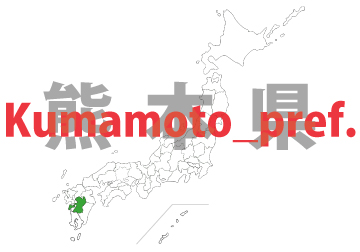
Kumamoto Prefecture – “Hi no kuni (Land of Fire)” overflowing with grandeur and kindness

Kumamoto castle, By Totti – Own work, CC BY-SA 4.0, Link
Nestled in the heart of central Kyushu, Kumamoto Prefecture is like a treasure chest waiting to be discovered! This wonderful region serves as your perfect gateway to some of Japan’s most breathtaking natural wonders and fascinating historical sites. You simply can’t miss the magnificent Mount Aso with its dramatic active volcanic crater, or the awe-inspiring Kumamoto Castle – proudly standing as one of Japan’s three most spectacular castles.
The prefectural capital, Kumamoto City, beautifully weaves together modern city life with traditional Japanese charm, and you’ll absolutely fall in love with places like Suizenji Jyojuen garden. This meticulously crafted garden is truly something special – it’s actually a miniature recreation of the famous 53 stations along the old Tokaido road! Walking through it feels like taking a peaceful journey through Japan’s refined landscape artistry, offering visitors a perfect moment of tranquility away from the bustling city life.
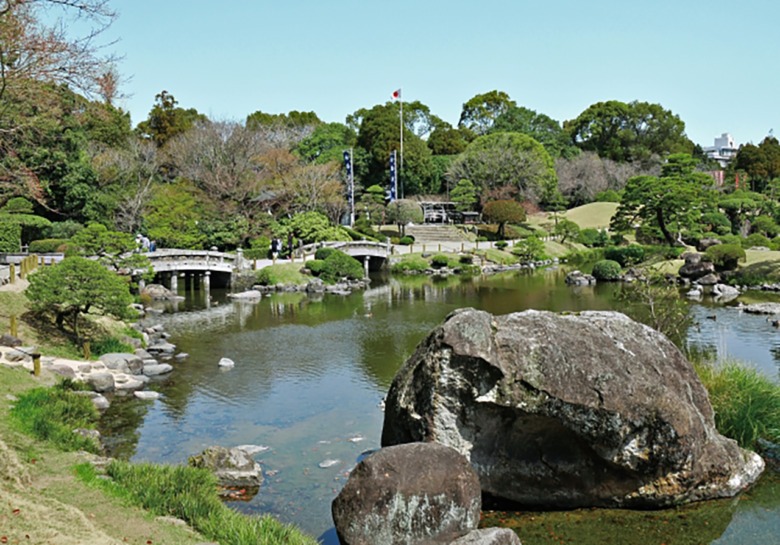
Suizenji jyoujyuen
Industrial Heritage and Historical Background
Stepping into Kumamoto’s industrial heritage is like taking a fascinating journey back in time to Japan’s remarkable transformation period! The prefecture played a crucial role in the nation’s mining industry, and you can still feel that powerful history today. The impressive Miike Coal Mine complex, including the iconic Manda Pit, stands as a proud testament to Japan’s industrial revolution and shows us just how important Kumamoto was in fueling the country’s incredible economic boom during the Meiji era. What makes this even more special is that the Manda Pit has been officially recognized as a UNESCO World Heritage Site as part of “Japan’s Meiji Industrial Revolution: Iron and Steel, Shipbuilding and Coal Mining” – a truly prestigious honor that celebrates its global historical significance!
These amazing mining facilities aren’t just about technological progress – they tell the deeply human stories of countless hardworking people who dedicated their lives to transforming Japan into the modern industrial powerhouse we know today. When you visit these sites now, you’re not just seeing old buildings; you’re experiencing world-class cultural landmarks that lovingly preserve the memory of Japan’s industrial journey while helping us understand the dramatic social and economic changes that shaped the Japan we see today.
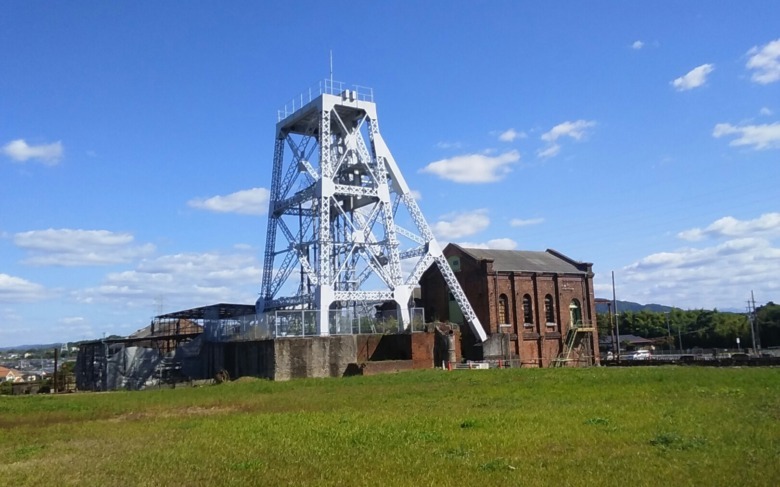
Miike Coal Mine Manda Pit, 水だらけのプール – 投稿者自身による著作物, CC 表示-継承 4.0, リンクによる
Local Cuisine and Food Culture
Kumamoto’s culinary scene is as vibrant and diverse as its people, offering visitors a delightful gastronomic journey that perfectly captures the prefecture’s agricultural richness and warm cultural traditions. The beloved Kumamoto ramen is a true local pride, featuring its signature tonkotsu (pork bone) broth that’s been lovingly perfected by passionate ramen masters over generations. What makes it special is that rich, creamy texture and deeply satisfying flavor that locals swear by.
Then there’s basashi – yes, raw horse meat sashimi! While it might raise eyebrows among first-time visitors, this centuries-old tradition is absolutely cherished by locals who appreciate its surprisingly tender texture and clean, refreshing taste, typically enjoyed with a touch of ginger and soy sauce. And let’s not forget about Kuma shochu, Kumamoto’s crown jewel of traditional spirits! This isn’t just any sweet potato shochu – Kuma shochu is a protected regional brand with over 500 years of history, crafted exclusively in the Kuma River basin using pure mountain water and time-honored techniques. The prefecture’s volcanic soil also blesses us with incredibly sweet watermelons that are famous throughout Japan for their juicy perfection.
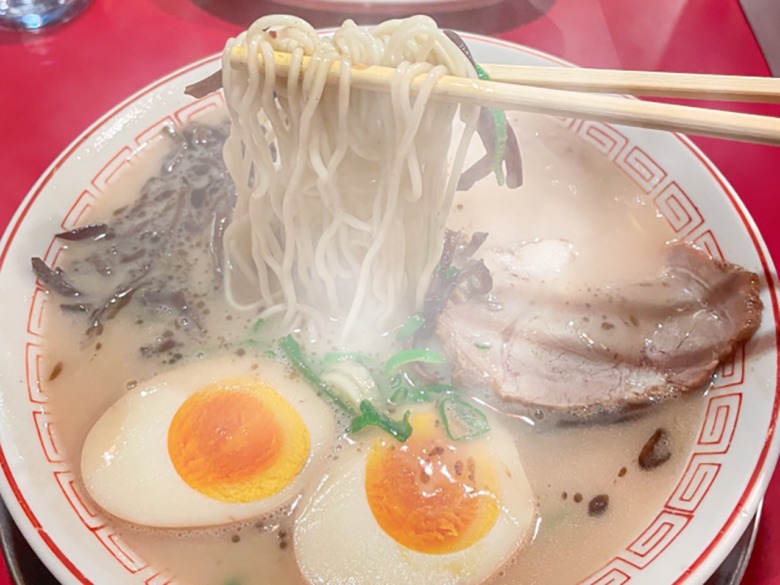
kumamoto ramen
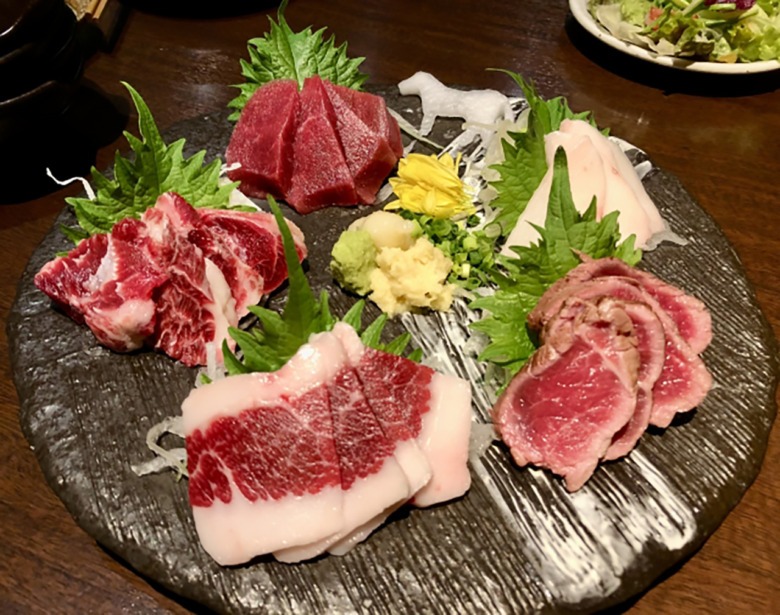
Basashi (Horse meat sashimi)

kuma shouchuu(shochu)
Traditional Music, Cultural Heritage & Local Spirit
What truly makes Kumamoto special isn’t just its stunning landscapes, but the warm, spirited character of its people – affectionately known as “higo-moyashi” (Higo sprouts). Kumamoto folks are famous throughout Japan for their straightforward, passionate nature and incredible resilience, traits that have been shaped by living alongside the active Mount Aso for generations. They’re known to be a bit stubborn sometimes, but in the most endearing way – when they believe in something, they’ll stick to it with unwavering determination! This spirited character comes alive beautifully in their traditional music and cultural expressions. The deeply moving “Kokyou no Haika” (Abandoned House in My Hometown), penned by local son INDOU Kyukei from Hitoyoshi City, continues to tug at heartstrings across Japan with its profound sense of nostalgia.
Then there’s the hauntingly beautiful “Itsuki no komoriuta” (The Lullaby of Itsuki), lovingly passed down through generations in the Kuma region – the very same area that produces that precious Kuma shochu we mentioned earlier! This gentle lullaby tells the touching story of a young girl’s hardships, and its melancholy melody has the power to move anyone to tears.
On the lighter side, children still chant the playful “Antagata Dokosa,” a charming handball rhyme that dates back to the Edo period, while the rousing “Kumamoto Kenka Ondo” perfectly captures the prefecture’s bold, fighting spirit. All of these cultural treasures are beautifully framed by Kumamoto’s breathtaking natural stage – from Japan’s largest caldera at Mount Aso to the mystical Takachiho Gorge, creating a perfect harmony between the land and its people that truly defines the soul of this remarkable prefecture.

Mt.Aso caldera

Kumamon
(Kumamoto Character)



